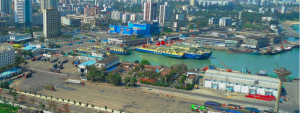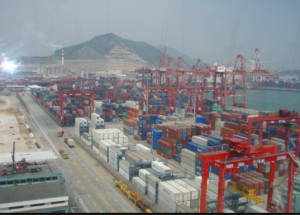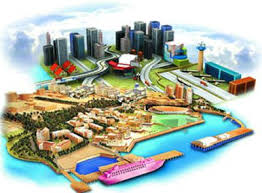In this blog post, Abdul Shukoor KP, a student pursuing a Diploma in Entrepreneurship Administration and Business Laws by NUJS, describes the impact and role of SEZs on the International Business Environment.
Free Trade Zone: History & Growth
Throughout the history of mankind, different mechanisms have been adopted to facilitate trading, including the introduction of Free Trade Zones. While free zones today are quite different from those of the past, it is not a new concept. Dating as far back as the Western civilizations, it existed in the Phoenician city of Tyre and during 300 BC in the Greek Island of Delos, which consequently became one of the wealthiest islands in the world for nearly a century[i].
The free trade zones were not considered to be mere exchange/trading points of finished goods; they were an industry-based economic activity. Ireland is of particular importance, as the first modern industrial free zone was established in Shannon, Ireland, in 1959. The Network Free Trade Zone came into existence through the law enacted (viz. Free Trade Zone Act) by the United States (US) Congress in 1934. India too had a rich history of free trade prior to the dawn of economic liberalization. The Kandla Port at Kutch is the first Free Trade Zone in the world, established on 1 January 1965. In the year 1978, India had four other free trade zones at Mumbai, Chennai, Noida and Falta. In the same year, China had gone through a major economic shift and had realized the importance of Free Trade Zones. However, the first Chinese Free Trade Zone became operational only in 1984 at Shenzhen. During the 70’s and 80’s, special economic zones flourished in Southeast Asia, Latin America and to some extent in Africa, Middle East and the rest of Asia.[ii]
Since the mid-1980s, the number of newly established zones has grown rapidly in almost all regions, with dramatic growth in developing countries. For example, in 1986, the International Labour Organization’s (ILO’s) database of SEZs reported 176 zones in 47 countries; by 2006, this number rose to 3,500 zones in 130 countries (Boyenge 2007), although many of these zones are single companies licensed individually as free zones. SEZs are now estimated to account for more than US$200 billion in global exports and employ directly at least 40 million workers.[iii]
Definition of SEZs
Wei Ge has defined special economic zones as “characterized in general terms as a geographic area within the territory of a country where economic activities of certain kinds are promoted by a set of policy instruments that are not generally applicable to the rest of the countries.”[iv]
Now the term Special Economy Zones (“SEZ”) covers a broad range of zones, such as free trade zones, export-processing zones, industrial parks, economic and technology development zones, high-tech zones, science and innovation parks, free ports, enterprise zones, and others.
The following are the main characteristics of Special Economic Zones (SEZ):
- Geographically demarked area with physical security.
- Administrated by single body/authority.
- Enjoying financial and procedural benefits
- Streamlined procedures
- Having separate custom area
- Governed by more liberal economic laws.
In recent times, buildings are being assigned as free zones, like those in Dubai.

Objectives of SEZs
SEZs are normally established with the aim of achieving one or more of the following objectives:
- To enhance foreign investment, especially to attract foreign direct investment (FDI), thereby increasing GDP.
- Increase shares in Global Export (international Business).
- As experimental laboratories for the application of new policies and approaches- China’s large-scale SEZs are classic examples.

- Generation of additional economic activity, or in support of wider economic reform strategy, which reduces anti-export bias while keeping protective barriers intact. The SEZs of China, The Republic of Korea, Mauritius, Taiwan, and China, follow this pattern.
- Creation of employment opportunities and to serve as “pressure valves” to alleviate large-scale unemployment. SEZ programs of Tunisia and the Dominican Republic are frequently cited as examples of programs that have remained enclaves and have not catalyzed dramatic structural economic change, but remained robust, job-creating programs.
- In support of a wider economic reform strategy. In this view, SEZs are a simple tool permitting a country to develop and diversify exports. Zones reduce anti-export bias while keeping protective barriers intact. The SEZs of China, The Republic of Korea, Mauritius, Taiwan, and China, follow this pattern.
- Development of infrastructure facilities.
- Exposure to technology and global market.
According Douglas Zhihua Zeng, SEZs confer two main types of benefits, which in part explain their popularity- “static” economic benefits such as employment generation, export growth, government revenues, and foreign exchange earnings; and the more “dynamic” economic benefits such as skills upgrading, technology transfer and innovation, economic diversification, productivity enhancement of local firms, etc.[v]
Benefits and Incentives
In order to encourage participation in Special Economic Zones, companies have been provided with certain benefits and incentives, including the following:
- Tax benefits (Tax holidays, income tax exemptions etc.)
- Liberal Labour Regulations.
- Exemption from excise and customs duty on procurement of capital assets, consumable stores, raw-materials from domestic market.
- Exemption from sales tax, import duty, income tax, minimum alternative tax and dividend distribution tax.

- Streamlined procedures (online/single window).
- Liberal approach in foreign direct investments.
- Increased capital account convertibility.
- Relaxed export regulation.
- Profits could be repatriated fully.
- Reimbursement of central sales tax paid on domestic purchases.
- Non-applicability of related environmental laws.
Role of SEZs in International Business
One of the main objective of SEZ is to enhance exports, i.e. to have a prominent role in international business. A main factor in determining the success of SEZ is growth in the exports made by them. The purpose behind their establishment is to provide an internationally competitive environment to increase export, by making available goods and services free of tax and duties supported by convergent infrastructure.
In order to stimulate the exports, normally, related enactments were provisioned with the following:
- Long-term and stable policy framework with minimum regulatory regime.
- Expeditious and single window approval mechanism.
- Import and export movements of goods are based on self-declaration.
- No routine examination is made unless specific order from concerned authority.
- Packages of incentives to attract foreign and domestic investments for promoting exports-led-growth.

- Exemption from custom duty on goods imported into the SEZ by the developers to carry out their authorized operations.
- Exemption from customs duty on goods exported from the SEZ by the developer or SEZ units.
- Free Trade and Warehousing Zones, to create trade related infrastructure to facilitate import and export of goods and services and to create world-class infrastructure for warehousing with all amenities.
- Freedom to carry out trade transaction in free currency.
- “Deemed Export” Facilities in the SEZ.
SEZs & International Business: From an Indian Perspective
The establishment of SEZ in India was envisaged as an important strategic tool to expedite the growth of international trade. This manifests itself in the form of increased exports as a unit set-up to produce goods and services. Hence, the increased level of export has been critical to the success of SEZs.
With the leverage of economic liberalization and introduction of SEZs on a wide scale, India has witnessed unprecedented growth in its exports.
Although the period of 1999-2000 witnessed a big change in the government policies towards exports due to economic liberalization, its growth remained almost static during this period. Detailed export data from the period 2001 to 2016 is shown below:
| Year | Total |
| 2015-16 | 171,637,804.58 |
| 2014-15 | 189,634,841.76 |
| 2013-14 | 190,501,108.86 |
| 2012-13 | 163,431,828.96 |
| 2011-12 | 146,595,939.96 |
| 2010-11 | 113,696,426.38 |
| 2009-10 | 84,553,364.38 |
| 2008-09 | 84,075,505.87 |
| 2007-08 | 65,586,352.18 |
| 2006-07 | 57,177,928.52 |
| 2005-06 | 45,641,786.15 |
| 2004-05 | 37,533,952.62 |
| 2003-04 | 29,336,674.75 |
| 2002-03 | 25,513,727.66 |
| 2001-02 | 20,901,797.34 |
| 2000-01 | 20,357,101.09 |
The overall growth rate of export during the period 1966-2002 is estimated at 42.4 percent. After the SEZ Act came into place in 2005, a tremendous growth in exports has been observed. Moreover, SEZ in India has also made a remarkable progress in terms of export promotion between the periods 2005-06 and 2010-11. During 2001-2010, it has shown a 121% growth over the previous year. The same is still continuing as shown in the above table.
Despite all this growth, as per the Report of the Comptroller and Auditor General of India Report[vi], the actual exports are far behind in comparison to the projection of companies:
| Projection (RS. Cr) | Actual (RS. Cr) | % | No. of Developers | No. States |
| 3,95,547.43 cr | 1,00,579.70 | -74.5% | 84 | 9 |
Conclusion
With operational success, the role of the special economic zones has expanded from trade to investment technology, Research and Development, service, and training. Free zones have become the center of activity in modern economy. SEZs have played a significant role in economic enrichment of developing countries, by improving international business. However, due to the economic slowdown prevailing globally, the export businesses especially are at stake. Some of the countries are facing turmoil and set back due to unstable SEZ business.
References:
[i] https://michael-castlemiller-rn3i.squarespace.com/…/WEPZA-Series-On-EPZs-and-Fre…
[ii]Reigstad Erlend, Special Economic Zones Policy: Review and Implications for India, NHH Bergen. (http://www.erlendreigstad.net/wp-content/reigstad_erlend_2007.pdf)
[iii]ILO database on export processing zones (Revised) Jean-Pierre Singa Boyenge April 2007
[iv]Special Economic Zones and Opening of the Chinese Economy: Some Lessons for Economic Liberalization (1991)
[v] Global Experiences with Special Economic Zones -With a Focus on China and Africa. For the year 2012-2013 (No. 21 to 2014)
 Serato DJ Crack 2025Serato DJ PRO Crack
Serato DJ Crack 2025Serato DJ PRO Crack








 Allow notifications
Allow notifications



